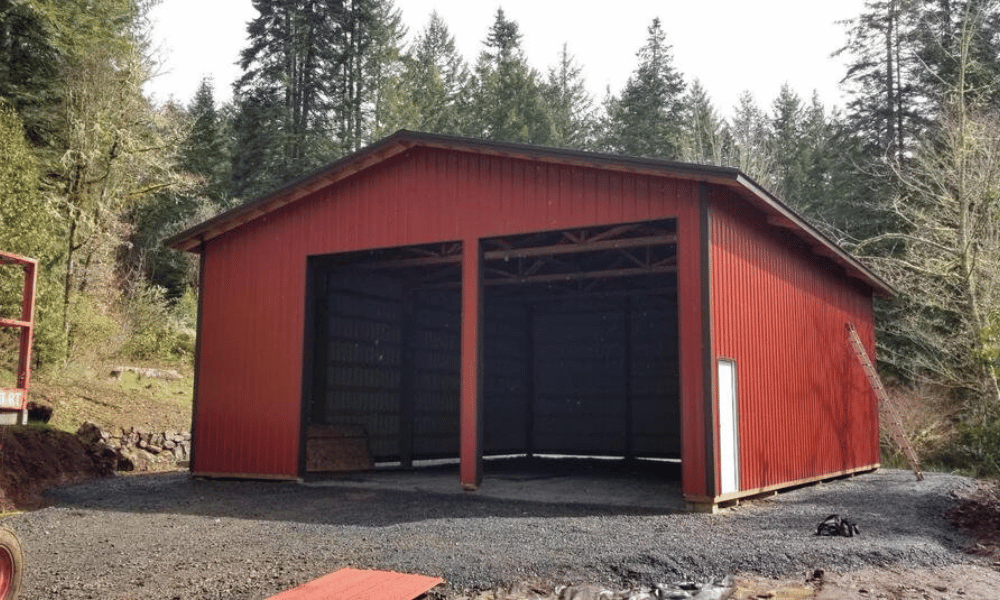Introduction
In the evolving landscape of agriculture, maintaining animal welfare has become a paramount concern for farmers and ranchers alike. As societies place more emphasis on ethical farming practices, it’s crucial to explore innovative solutions that not only enhance production but also prioritize the well-being of livestock. One such solution is the implementation of pole buildings on farms. These structures are increasingly recognized for their versatility, durability, and efficiency in promoting better living conditions for animals.
In this comprehensive article, we will delve into the various aspects of using pole buildings to improve animal welfare on the farm, examining their benefits, design considerations, and practical applications. Whether you’re a seasoned farmer or just starting in agriculture, understanding how these unique structures can enhance your operations is vital.
What Are Pole Buildings?
Defining Pole Buildings
Pole buildings are structures built using a post-frame construction technique where vertical poles serve as the primary support system. Unlike traditional buildings that rely heavily on concrete foundations and load-bearing walls, pole buildings utilize engineered materials and open spaces to create versatile environments suited for various agricultural purposes.
The Structure of Pole Buildings
- Materials Used: Typically constructed from treated wood or metal poles, these buildings can be clad with various materials such as metal siding or wood. Design Flexibility: The design allows for wide spans without interior columns, providing ample space for animals and equipment. Cost-Effectiveness: Generally less expensive than conventional construction methods due to reduced material requirements and labor costs.
Key Advantages of Pole Buildings
Durability: Built to withstand harsh weather conditions. Versatility: Can be adapted for multiple uses including housing livestock, storage spaces, or equipment shelters. Energy Efficiency: Proper insulation can lead to energy savings.Using Pole Buildings to Improve Animal Welfare on the Farm
Enhancing Living Conditions for Livestock
Animal welfare encompasses various factors including comfort, safety, and freedom from stress. Using pole buildings can significantly contribute to enhancing these aspects:
Ventilation: Pole buildings often incorporate large openings or vents that promote airflow, reducing heat stress during warmer months. Space Utilization: With their open designs, these structures allow farmers to create spacious environments where animals can move freely. Access to Natural Light: By incorporating windows or skylights in pole building designs, farmers can ensure that animals receive adequate natural light—a crucial factor in animal health.Creating Comfortable Environments
Comfort is key when it comes to animal welfare. Here’s how pole buildings help achieve this goal:
Temperature Regulation: Insulated wall panels can help maintain stable temperatures within the building regardless of external weather conditions. Soft Flooring Options: Farmers can choose soft flooring materials that reduce joint stress in animals compared to hard concrete surfaces. Shelter from Elements: The sturdy structure protects animals from rain, wind, and extreme temperatures.Design Considerations for Pole Buildings
Planning Your Building Layout
When constructing a pole building for animal housing, careful planning is essential:
Zoning Regulations: Always consult local zoning laws regarding agricultural structures. Size Requirements: Determine how many animals will inhabit the space and plan accordingly—both for current needs and future growth. Accessibility Features: Ensure easy access points for moving animals in and out safely.Choosing the Right Materials
The choice of materials plays a significant role in both functionality and aesthetics:
Insulation Options: Investigate different insulation types based on climate needs—fiberglass batts vs spray foam insulation. Roofing Materials: Select roofing that will withstand local weather patterns while providing longevity (metal roofs vs shingles). Flooring Choices: Decide whether dirt floors (which may require regular maintenance) or concrete options are best suited for your operation.Health Benefits Associated with Pole Buildings
Reducing Stress Levels in Animals
Stress reduction is crucial for maintaining overall livestock health:
Social Structures: Spacious designs encourage natural social interactions among animals while minimizing aggressive behaviors due to overcrowding. Safety Features: Smooth surfaces and rounded edges reduce injury risks during movement within the barn.Promoting Better Nutrition
Healthy living environments contribute positively towards nutrition:
Access To Feed And Water Sources

- Adequate trough space ensures all animals have access without competition leading to more balanced diets.
Cleanliness
- Well-designed drainage systems keep waste away from feeding areas lowering disease risks associated with unclean environments.
FAQs About Using Pole Buildings
What are the costs associated with building a pole barn?
The costs vary depending on size, materials used, design complexity; however typically they range from $15-$30 per square foot excluding land costs.
How long does it take to construct a pole building?
Construction time generally ranges between 4-8 weeks depending upon weather conditions & contractor availability.
Can I use my existing structure as part of my new pole building?
Yes! Existing barns may be integrated into new designs by ensuring they meet structural integrity standards established by local codes.
What maintenance do pole buildings require?
Routine checks should include inspecting roofs/walls for damage; cleaning gutters regularly; maintaining exterior finishes periodically prolongs life expectancy significantly!
Are there specific regulations governing livestock housing?
Yes! Local authorities often enforce guidelines regarding spacing ratios within enclosures/animal care protocols which must be adhered too strictly!
How do I determine if my farm needs additional shelter options?
Consider assessing your current layout versus projected growth rates alongside seasonal challenges faced historically!
Conclusion
Using pole buildings offers an innovative approach to enhancing animal welfare on farms by providing safe spaces tailored specifically towards livestock needs while still allowing flexibility within agricultural operations overall growth plans! Their unique structural advantages combined with thoughtful planning create environments conducive toward fostering healthier happier farm animals!
In conclusion we see how essential it becomes today more than ever before prioritizing humane treatment through practical solutions like implementing proper architectural strategies towards successful farming practices while respecting our furry friends’ quality lives too! Remember knowledge empowers transformation so take time researching http://franciscoyilu804.theburnward.com/harnessing-technology-smart-features-for-modern-pole-buildings adapting techniques best suited tailored individual circumstances today making sure every hoof prints left behind symbolizes excellence achieved through responsible stewardship at its finest!